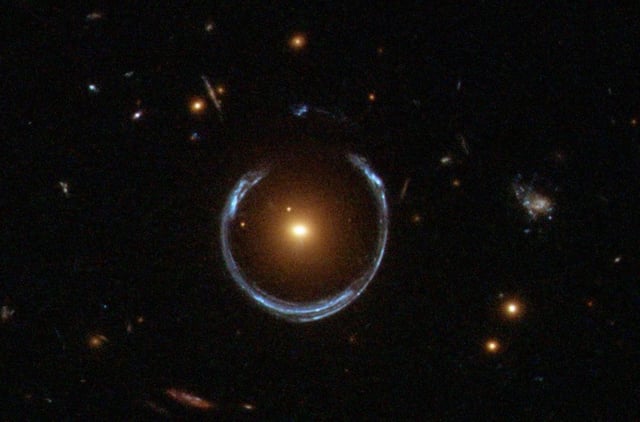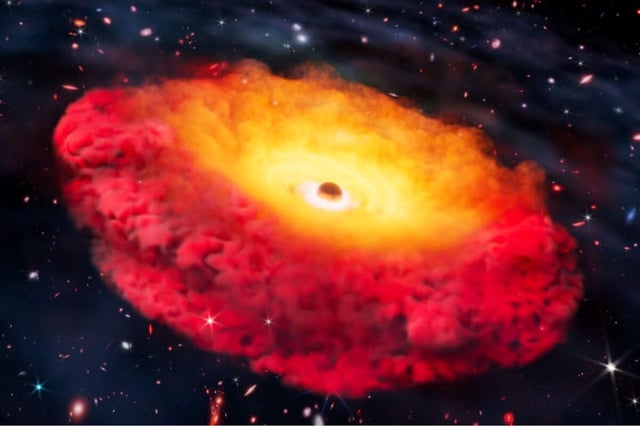Overview
- JWST CAPERS spectroscopy at z = 9.288 revealed broad emission lines from fast-moving gas around a supermassive black hole just 500 million years after the Big Bang, marking the universe’s earliest confirmed AGN.
- The CAPERS-LRD-z9 black hole’s estimated mass of up to 300 million times the Sun’s, nearly half of its host’s stellar mass, suggests unusually rapid growth or massive initial seeds in the early universe.
- At roughly 5 billion light-years away, the Cosmic Horseshoe galaxy enabled a direct dynamical measurement of a dormant black hole weighing 36 billion solar masses through combined gravitational lensing and stellar kinematics.
- The ultramassive dormant black hole resides in a fossil-group galaxy, indicating successive mergers of galaxies and their central black holes as a pathway to its extraordinary mass.
- Follow-up JWST observations plus forthcoming Euclid data are planned to refine theoretical models of black hole formation, seed assembly and growth across cosmic time.

